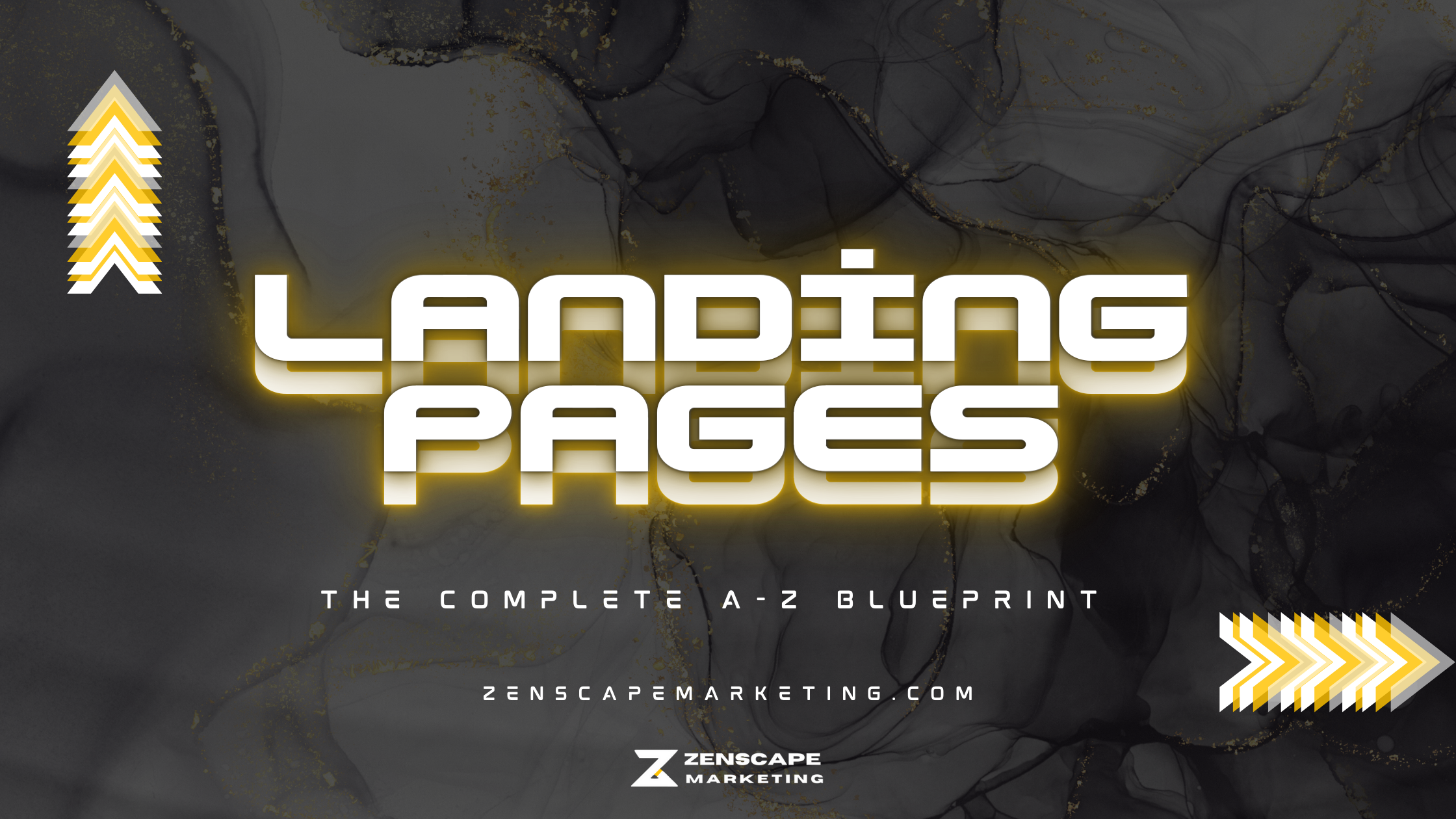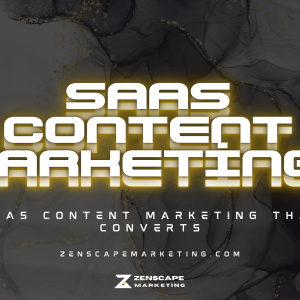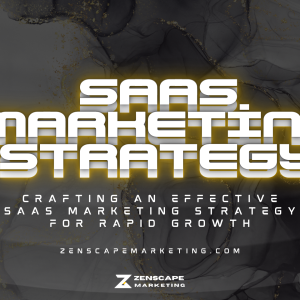Landing pages are the MVPs of any effective marketing strategy. They can make or break your campaigns. Craft high-converting landing pages that engage users and drive them to act, and your profits will skyrocket. Build lackluster pages that don’t connect with visitors, and you’ll waste your budget on poor conversion rates.
This comprehensive A-Z blueprint will teach you to create landing pages that convert like crazy. From understanding the basics to advanced optimization tactics, you’ll become a landing page expert by the end. Let’s dive in and transform your underperforming pages!
Landing Page Basics:
What is a Landing Page?
A landing page is a standalone web page that serves a singular, focused goal. It’s where a visitor “lands” after clicking on a link or ad from an external source like Google, social media, email, or elsewhere across the web.
In marketing, we drive targeted traffic to specific landing pages optimized to convert those visitors into leads and customers.
Unlike your main website pages or blog, a landing page is about getting visitors to take one predefined action or conversion.
This conversion objective could be:
– Download content like an ebook, whitepaper, checklist, etc.
– Signing up for a newsletter, free trial, demo, or other gated offer
– Purchasing a product or service
– Registering for a webinar or event
– Requesting a quote or free consultation
– Entering a contest giveaway
The landing page removes unnecessary navigation links and other website distractions. It draws all attention to the one clear call to action we want visitors to take after engaging with the content.
In essence, landing pages enable us to guide visitors through a controlled sales funnel experience. We send targeted traffic from ads to a dedicated landing page where we can influence the visitor and shape their following action through persuasive design.
Well-designed landing pages are essential for converting website traffic into leads and sales. They streamline the decision-making process for visitors and vastly improve conversion rates when implemented correctly.
Why Are Landing Pages Important?
High-performing landing pages are vital for any effective marketing strategy today. But why are they so important?
Landing pages provide immense value by streamlining the decision-making process for your website visitors.
Think about a standard website homepage. Visitors land there and get overwhelmed with navigation links, menu items, rotating banners, and other content. Too many options that divert their attention.
Imagine that same visitor coming directly from an ad to a focused landing page. This page only has one goal – gett: convert the unloading of your gated content offer.
The landing page removes all unnecessary distractions and clutter. It draws the visitor’s attention to the conversion action you want them to take after engaging with the content.
With a singular focus, landing pages significantly increase visitors’ chances of converting to your call-to-action. They don’t get distracted by other links. The path is clear.
Additionally, tailored landing pages aligned closely to your campaigns perform much better than generic website pages. Matching the messaging to each initiative converts more traffic.
Without focused, dedicated landing pages, you miss out on conversions from your marketing efforts. Visitors may land on your site but easily get sidetracked.
In short, well-designed landing pages are essential for:
– Reducing distractions to streamline decision-making
– Improving alignment with specific campaigns
– Boosting conversion rates and ROI from marketing activities
– Capturing more leads and sales from website traffic
– Crafting high-converting landing pages tailored to each offer and audience can make or break your campaigns. Do it effectively and watch your profits skyrocket thanks to higher conversions.
Landing pages are the MVPs of any stellar marketing strategy today. Use them to guide visitors seamlessly into becoming customers.
Types of Landing Pages
There are several common types of landing pages:
– Lead generation – ebook downloads, newsletter signups, and contact forms.
– Promotional – special offers, contests, limited-time deals.
– Click-through – advertisements that send visitors to a landing page.
– Squeeze pages – extremely focused pages with only a CTA.
– Long-form sales pages – for higher-priced or complex products.
– Coming soon or pre-launch pages to build hype.
– Elements of Effective Landing Pages
– Despite different purposes, all high-converting landing pages have some common elements:
– Relevant headline and sub-headline
– Clear, unique selling proposition
– Benefit-focused copywriting
– Strong call-to-action
– Minimalist design
– Trust factors (testimonials, guarantees, security badges)
– Engaging visuals and graphics
Now let’s explore how to implement these elements effectively.
How to Set Your Landing Page Goals
Before you start designing and building your landing page, it’s important to define your goals and strategy upfront clearly includes:
- Identifying Your Target Audience:
Conduct detailed audience research to understand the core buyer personas you aim to reach with your landing page. Analyze their demographics, needs, challenges, motivations, and other attributes.
This allows you to create tailored messaging and an aligned experience for each landing page. Speak directly to what your personas care about most.
- Setting Your Primary Call-to-Action:
What specific action do you want visitors to take when they land on this page? Sign up for your newsletter. Request a quote? Make a purchase?
Identify the one clear conversion action you want to guide visitors toward. Design the entire page to make it as easy and compelling as possible for visitors to take that next step.
- Defining Objectives and Key Results:
Set specific, measurable goals and key performance indicators to track the success of your landing page.
Examples could include:
- 100 free trial signups per month
- 50 newsletter subscribers weekly
- 10 product purchases daily
- 20% increase in form completion rate.
These quantifiable metrics allow you to refine your landing pages for better performance continually. Constantly be testing and optimizing to hit your objectives.
Having clearly defined goals and audience insights upfront is crucial to creating high-converting landing pages tailored to prompt the exact action you want from visitors. Know your objectives before you start designing.
Best Practices for Designing Landing Pages
Follow these proven design and copywriting practices to optimize your landing pages for maximum conversions:
– Create benefit-focused headlines that quickly communicate the core value proposition to visitors. Focus on their needs.
– Use sub-headlines under the main headline to further build intrigue and interest. Draw visitors into engaging further.
– Leverage plenty of white space in your layout. Avoid cluttering the page. Use space to guide the visitor’s eye down towards the conversion goal.
– Ensure branding is consistent with your overall marketing materials. Don’t deviate too far or
you’ll lose familiarity.
– Incorporate relevant, original graphics and visuals that resonate with your target audience.
Avoid cheesy stock photos when possible.
– Use succinct, scannable copywriting. Get to the point fast. Visitors want to know if your offer meets their needs quickly.
– Structure the page to have a seamless flow guiding visitors to the call-to-action. Make the conversion path obvious.
– Prominently highlight and visually contrast your CTA button/box from other elements on the page. Draw attention to it.
Additionally, avoid common landing page pitfalls like:
– Overly sales-focused copy that turns visitors off rather than engages them. Find the right balance.
– Confusing navigation links that divert focus from the conversion goal. Keep it simple.
Burying your call-to-action below the fold. Place it prominently in sight.
– With the correct headline, copy, layout, visuals, and streamlined flow – you’ll craft landing pages that guide visitors to convert every time. Remove obstacles and make the following action obvious.
Landing Page CRO Tips
Conduct A/B split testing and use tools like heatmaps to unlock even more conversions from your landing pages.
A/B testing allows you to test two different landing page versions against each other to see which performs better. The winning variation stays live, while the underperforming page is replaced or optimized.
Some elements you can experiment with:
Headline and copy – Try different messaging variations. Identify what resonates most.
Form field optimization – Test tweaks like requiring vs. optional fields, layouts, labels, etc. Remove friction.
Image placement – See if rearranging graphics or even removing them impacts conversions.
Call-to-action button text/colors/size – Determine the right balance of attention-grabbing yet aligned to offer.
Page layouts and content flow – Experiment with placement to guide visitors down the conversion path.
When starting, prioritize MVP (minimum viable product) style split testing. Identify the one landing page change likely to have the biggest impact on your results and test that isolated variable first.
For example, maybe switch up your CTA button messaging to better align with the offer. Keep everything else the same.
This MVP approach prevents too many moving parts from skewing results and makes refinements more targeted. Over time, continually test and iterate to lift conversions higher.
The Power of Dedicated Landing Pages
Instead of sending all website traffic to one or two generalized landing pages, build tailored pages for each specific offer, campaign, traffic source, and ad variation you are running.
For example:
– Send traffic from your Facebook ads to a different landing page than visitors from Google search ads.
– Create a unique landing page just for your latest promotion or special content offer.
– Tailor the page experience for visitors referred from an influencer’s post.
The key is matching the messaging, branding, and experience to align tightly with each campaign theme and audience.
Visitors from an ad focused on increasing productivity would expect to land on a page discussing just that – not your whole product catalog.
Deliver a cohesive experience from the ad to a landing page, and conversions improve. When the next step is predictable, visitors are more likely to take it.
Dedicating tailored landing pages for each initiative allows you to track performance better. See which pages, campaigns, and traffic sources deliver the highest return.
Then, double down on what works well and modify underperforming pages. Continual refinement ensures you maximize conversions and ROI across the board.
In short, avoid a one-size-fits-all approach. Take the time to create dedicated, campaign-specific landing pages. It can mean the difference between modest results and runaway success.
Split Testing Your Landing Pages
A/B split testing is crucial for CRO. Two comparable landing page versions are shown randomly to visitors to see which performs better.
Free tools like Google Optimize allow you to conduct tests efficiently. Start with changes to headlines, CTAs, and key copy components.
Analyze results after a testing period and pick a winner. Further, refine the better-performing page with new tests. Continual refinement will lift conversions.
Promoting Your Landing Pages
Now that you’ve created an excellent landing page, it’s time to drive high-quality traffic to it. Promote pages through:
– Paid ads – Google, Facebook, LinkedIn, Quora, Reddit, etc.
– Email marketing – Dedicated campaigns work best.
– Social media – Organic and paid promotions.
– Guest posts – Include links to your landing page.
– QR codes – Print codes on business cards or product packaging.
Optimize ads and campaigns for landing page success metrics. Track traffic sources to see which deliver the best conversions.
Critical Considerations for Mobile Optimization
With over 58% of all web traffic now happening on smartphones, optimizing your landing pages for mobile is no longer optional – it’s a must for any business.
If your landing page is too complex for mobile visitors to navigate, read, or take action on, you are hemorrhaging potential conversions.
Here are some key ways to optimize for mobile:
– Use responsive design to adapt layouts for smaller screens dynamically. Content should reflow, not just shrink down.
– Adjust font sizes to ensure the copy is legible without zooming. And make action buttons prominent.
– Avoid excessive vertical scrolling where possible. Long landing pages on mobile means a higher exit rate.
– Simplify and declutter layouts. Real estate is limited on mobile, so only essentials should be shown.
– Check forms, CTAs, and page flows on actual mobile devices. The desktop experience and mobile can differ significantly.
– Optimize pages for faster load speeds. Mobile connections can be spotty. Quick load times keep visitors engaged.
– Prioritize succinct, scannable messaging. Mobile visitors want to know why they should stay quickly.
– Use click-to-call and tap-to-email options. Automate cross-device experiences.
With the right mobile optimization strategy, your landing pages will convert desktop and mobile traffic at equal rates. Treat mobile as a first-class citizen, not an afterthought.
Test your pages regularly on popular devices. A responsive design alone isn’t enough. Keep refining the experience to remove all mobile friction.
Conclusion:
Well-designed landing pages are essential to turning website visitors into leads and customers. Follow this A-Z blueprint to create landing pages that truly convert.
Focus on defining goals, crafting targeted messaging, simplifying layouts, and guiding visitors seamlessly to conversion-focused CTAs.
Now that you’re armed with advanced landing page expertise, you have all the tools needed to boost conversions dramatically. It’s time to implement these tactics on your next campaign landing page. Begin designing for results today!
Want to Start Driving More Conversions with High-Performing Landing Pages?
Let Zenscape Marketing’s team of experts craft landing pages that convert visitors into leads and sales.
We take care of everything from CRO-focused design to ongoing optimization and split testing. You’ll get dedicated, high-converting landing pages for each campaign and initiative.
Stop wasting money on lackluster landing pages. Partner with Zenscape to create landing pages that deliver results as powerful as our holistic growth strategy.
Let’s discuss how we can create the perfect conversion-focused landing pages tailored for your business!






